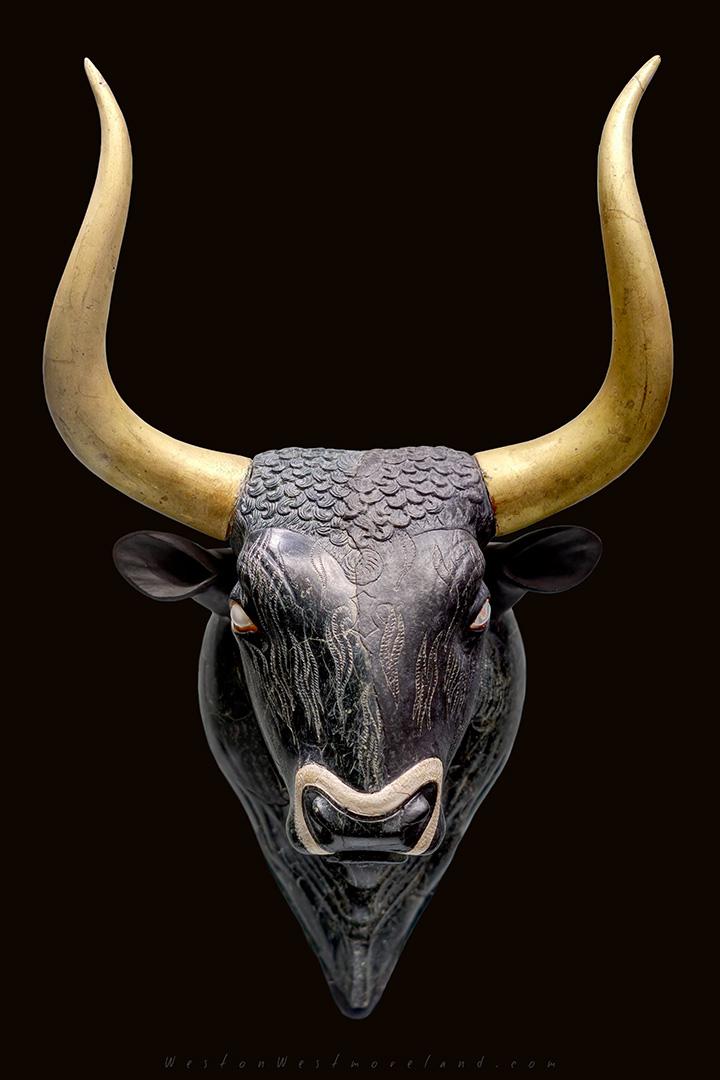
Minoan bull’s head rhyton (ceremonial vessel), Palace of Knossos, Crete c. 1550-1500 B.C.E. Carved in black steatite, only its right side is original, the horns were gold gilded wood. The carving of the bull’s head is a combination of vivid realism and stylization… [1080×720] [OC]
by WestonWestmoreland

1 Comment
…the eyes of the bull were made of inlaid rock crystal lenses, painted on their flat back with a black iris and red pupil, surrounded in white. The rim of the eye was inlaid with red jasper, giving the bull a wild, frightening, bloodshot look.
The bull is shaggy, with naturalistic locks hanging down its face, carved with very shallow incisions in the soft stone and filled with ground white stone (perhaps gypsum) for contrast against the black steatite. Also very realistically carved are the rolls of skin at the neck of the bull. However, other parts of the representation of the bull are rather stylized. For instance, the hair whorl at the center of the bull’s forehead looks more like a spiral than a swirled tuft of hair, and this is topped by a patch of stylized fur with curls arranged in rows. Lastly, the patch of white hair around the snout of the bull, rendered with shell inlay, looks graphic in its straight borders.
Bull’s head rhyta such as this one were some of the most valued treasures of Minoan Crete. Images of them appear in 18th dynasty Egyptian wall paintings, where they are shown as pharaonic gifts from visiting Cretans. Many examples of rhyta have been archaeologically recovered; some twenty-three of them have been found at archaeological sites on Crete and the Greek mainland. What is remarkable is that all have been found purposefully destroyed. This has led archaeologists to believe that after the utility of a bull’s head rhyton had expired, it was ritually destroyed.
You can find this magnificent piece at the Heraklion Archaeological Museum.